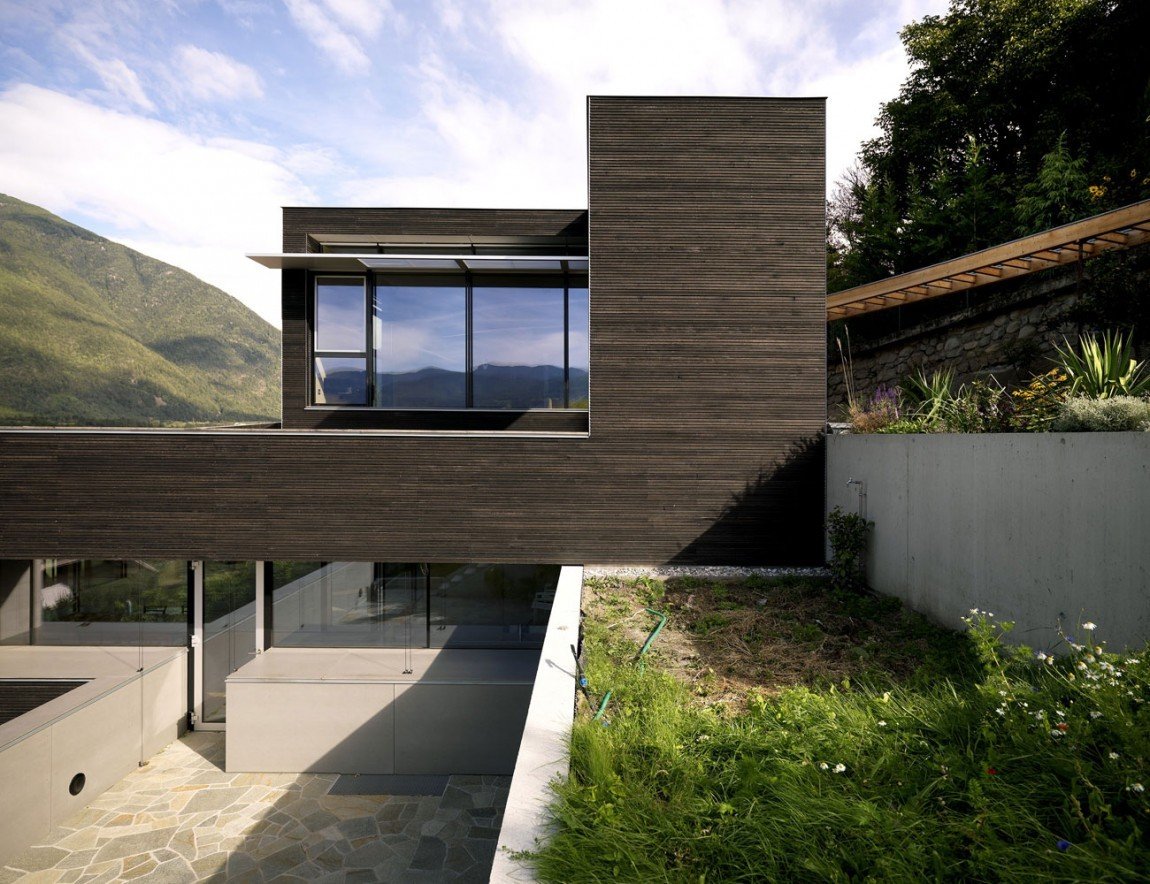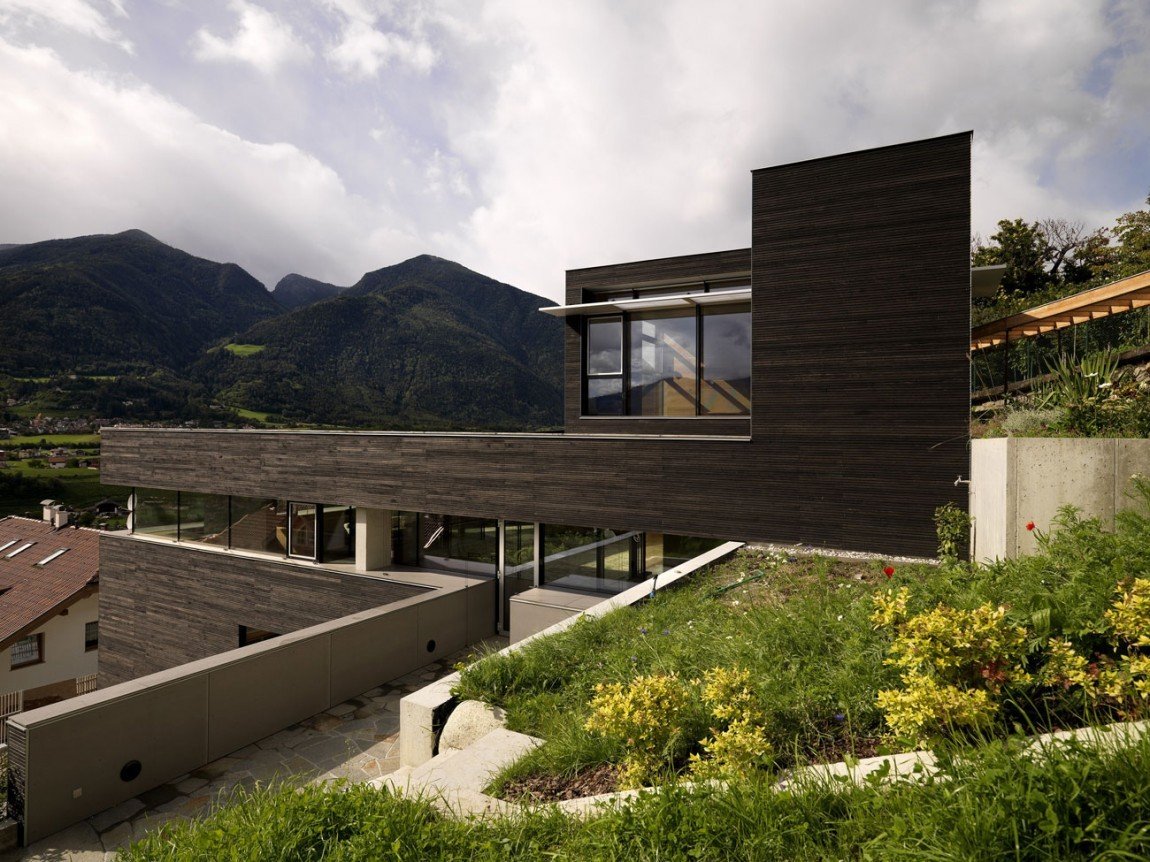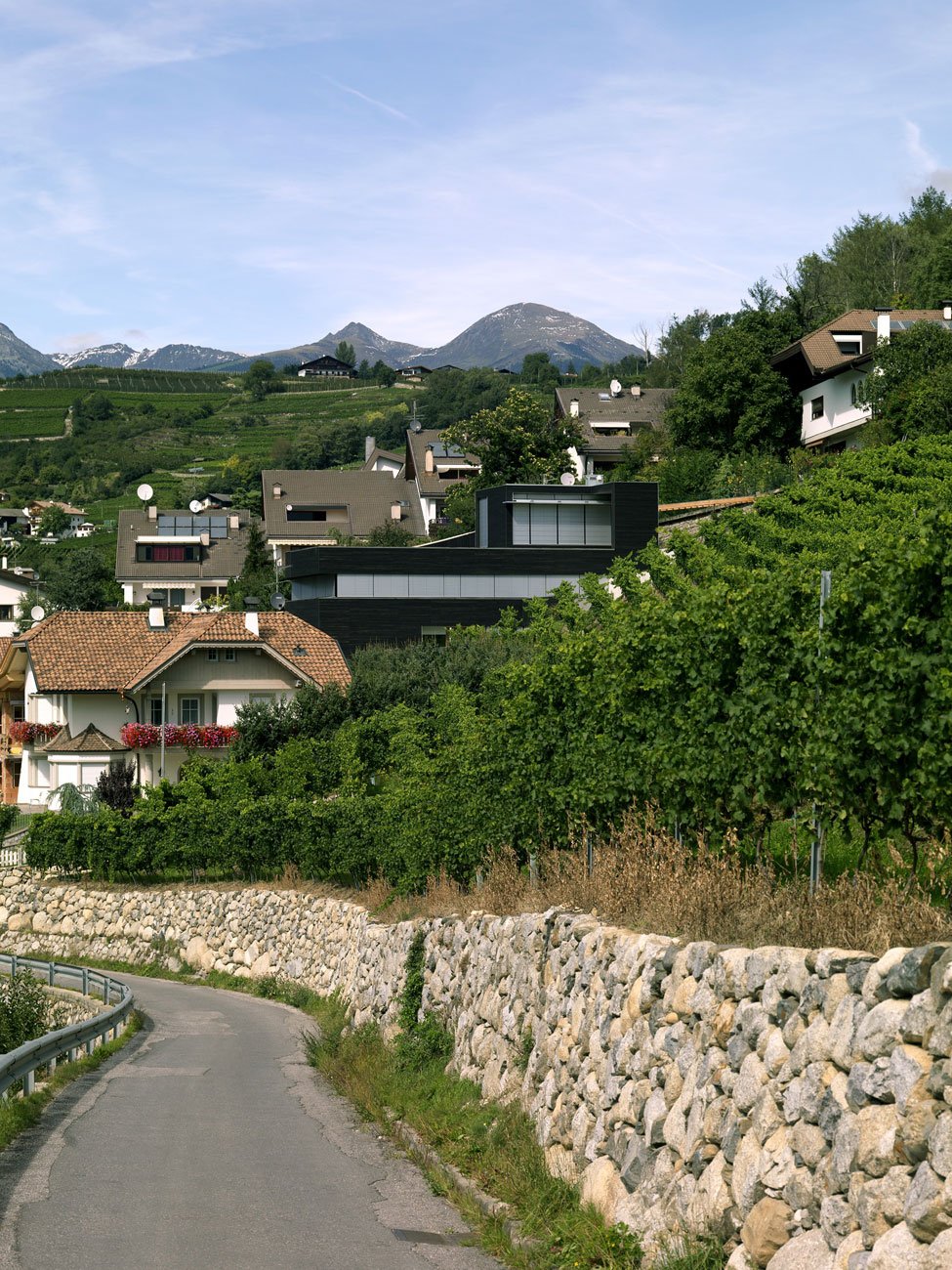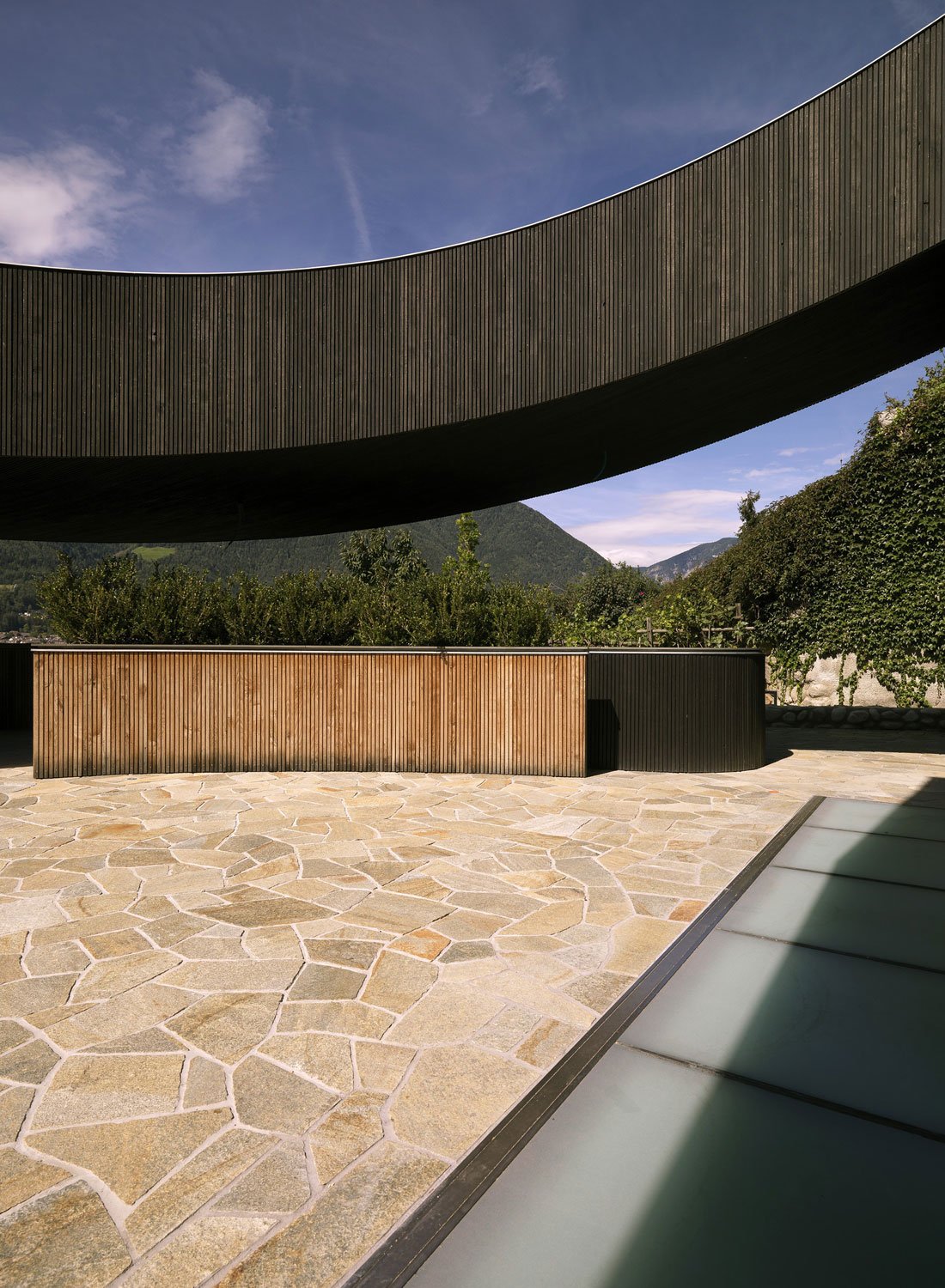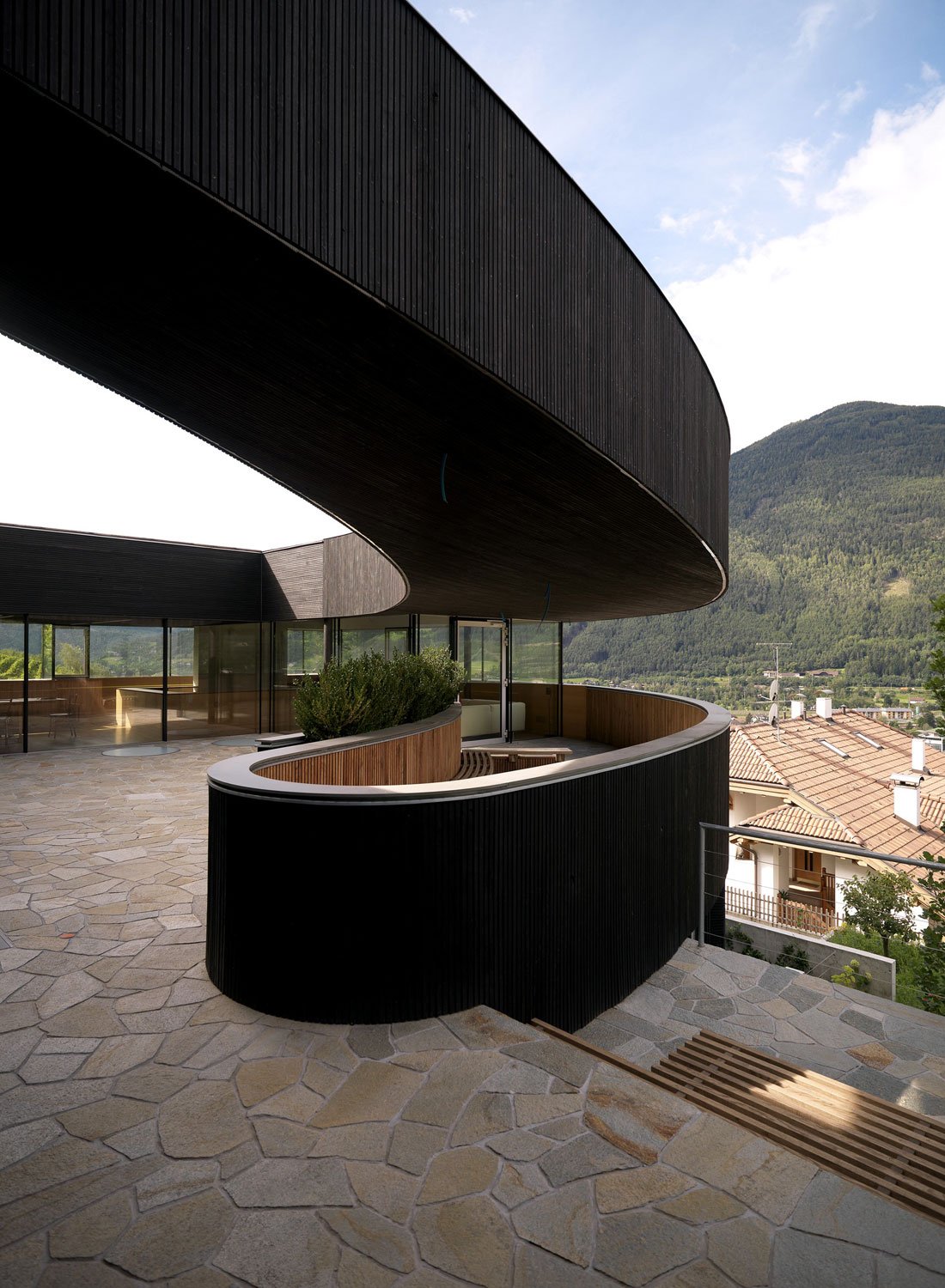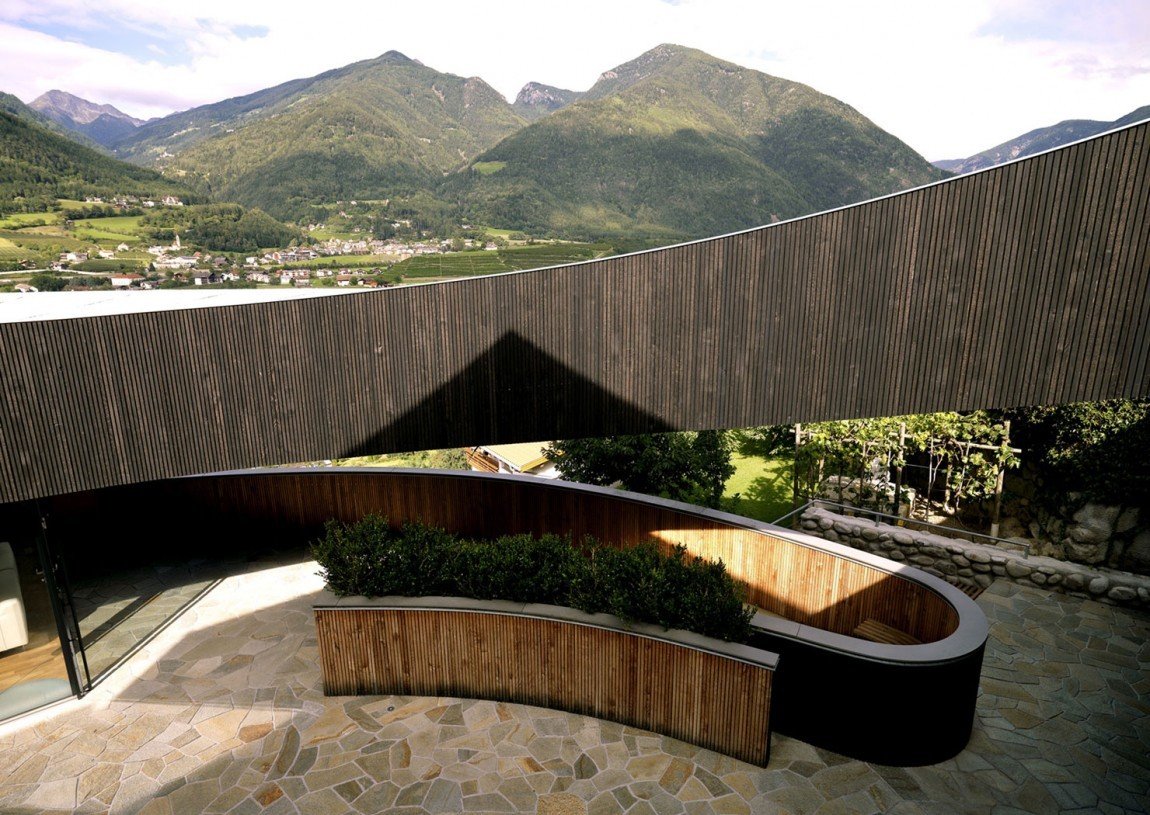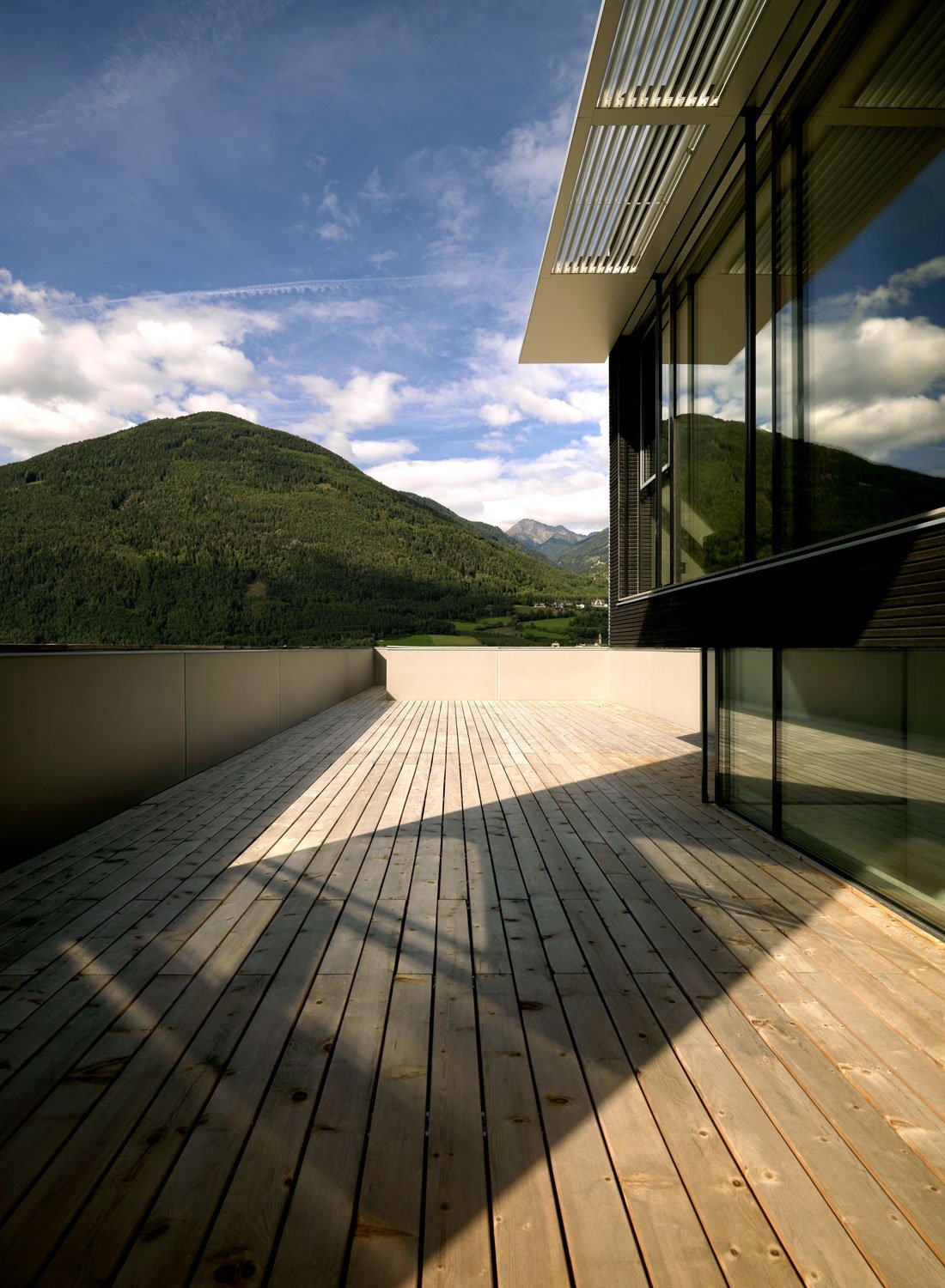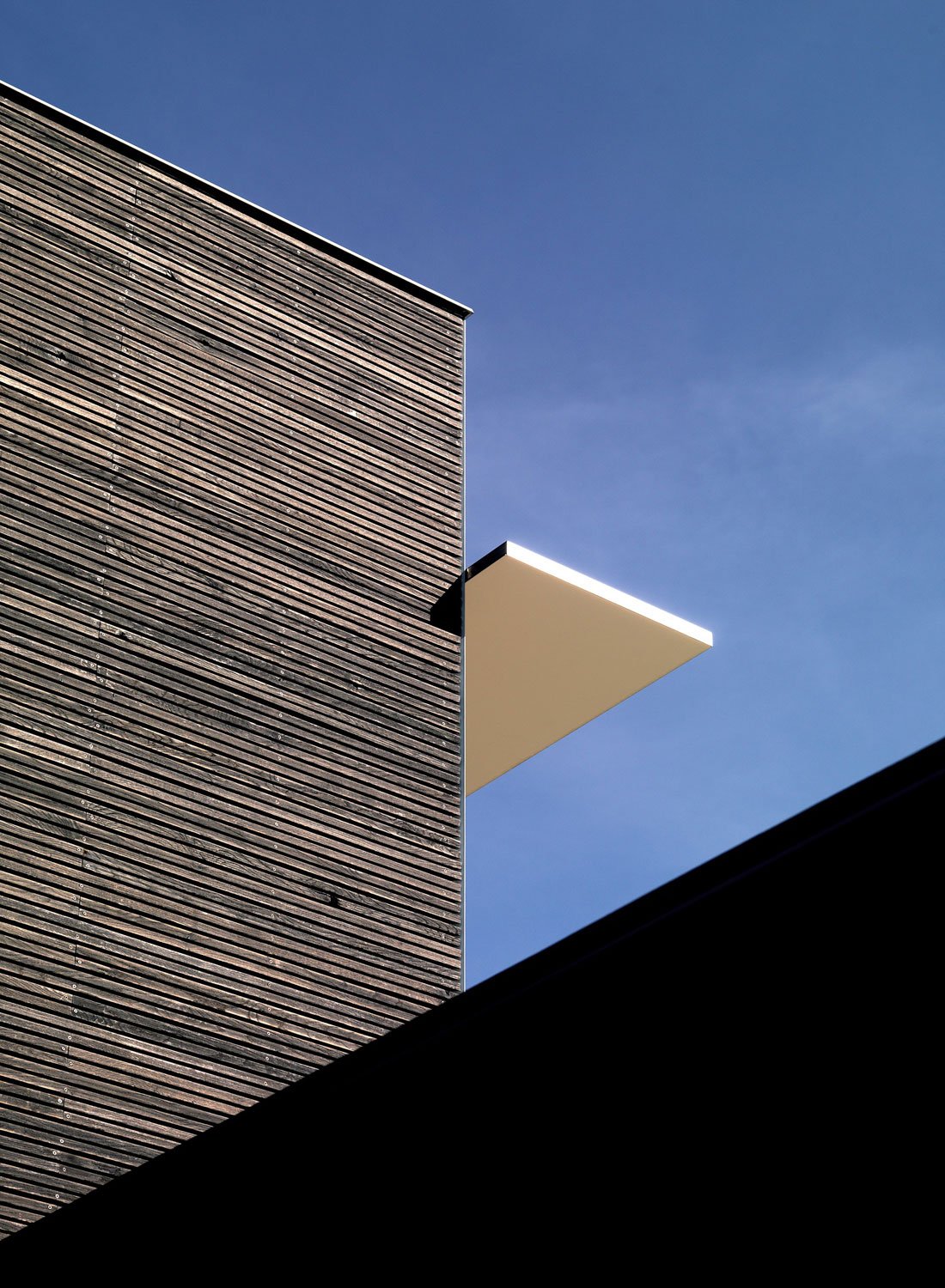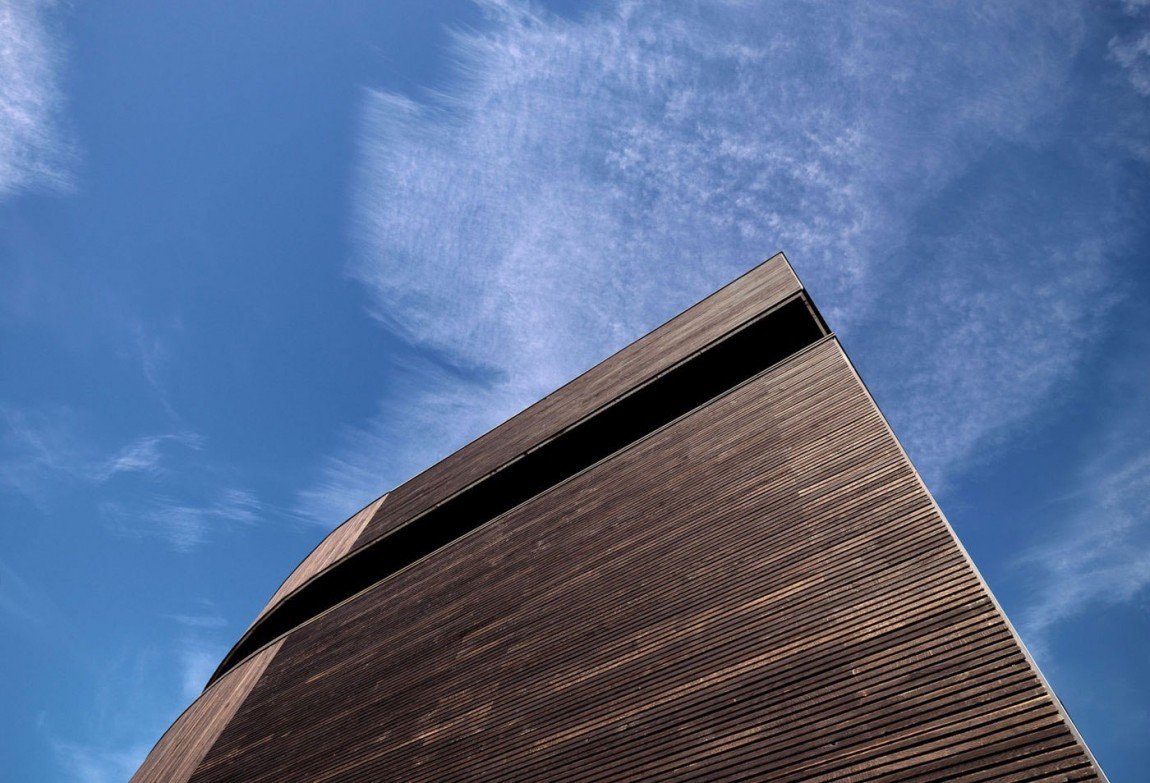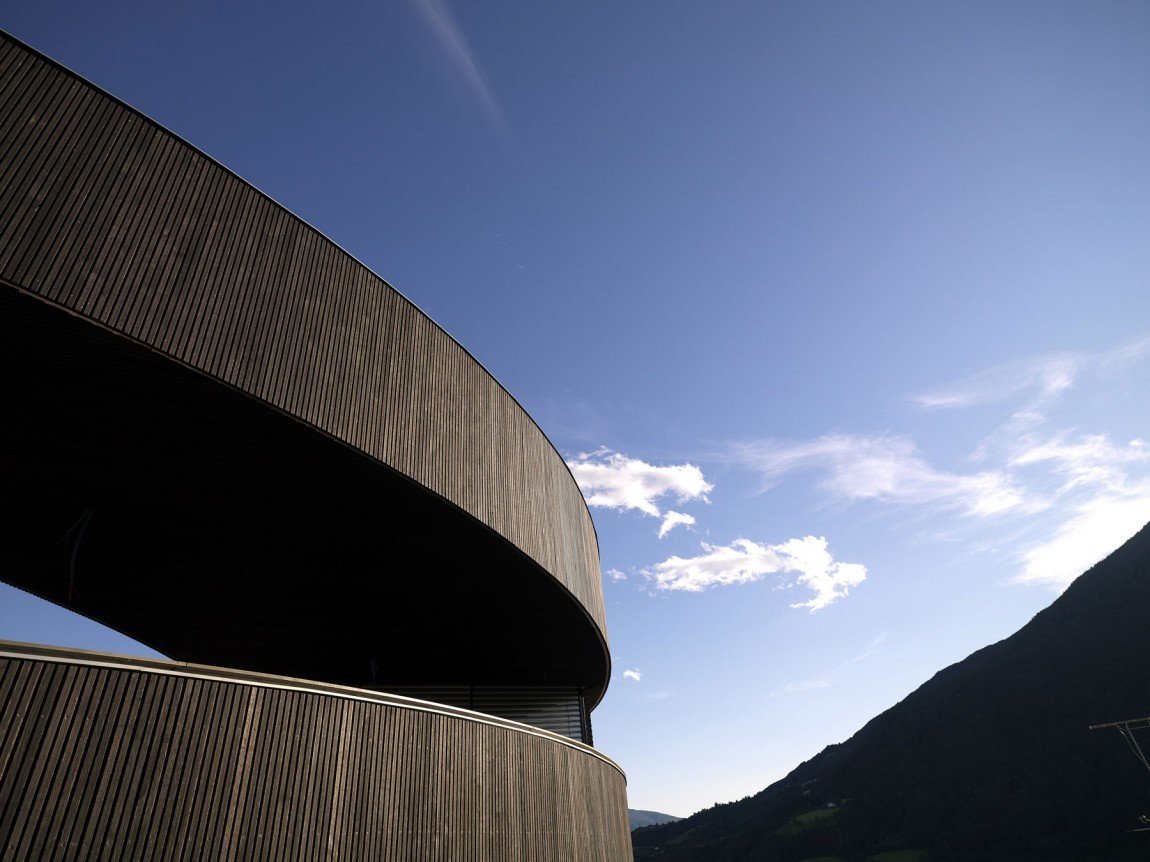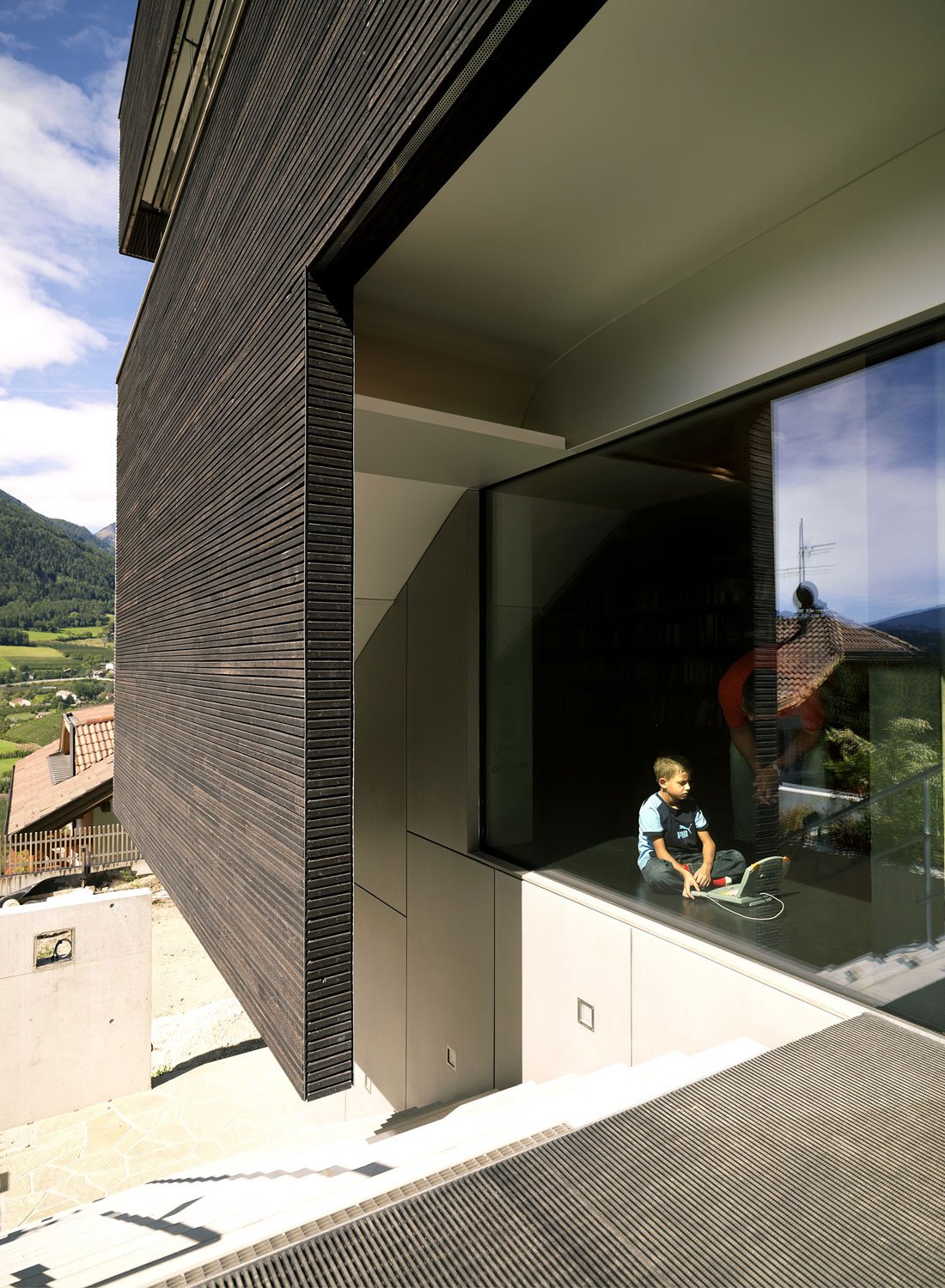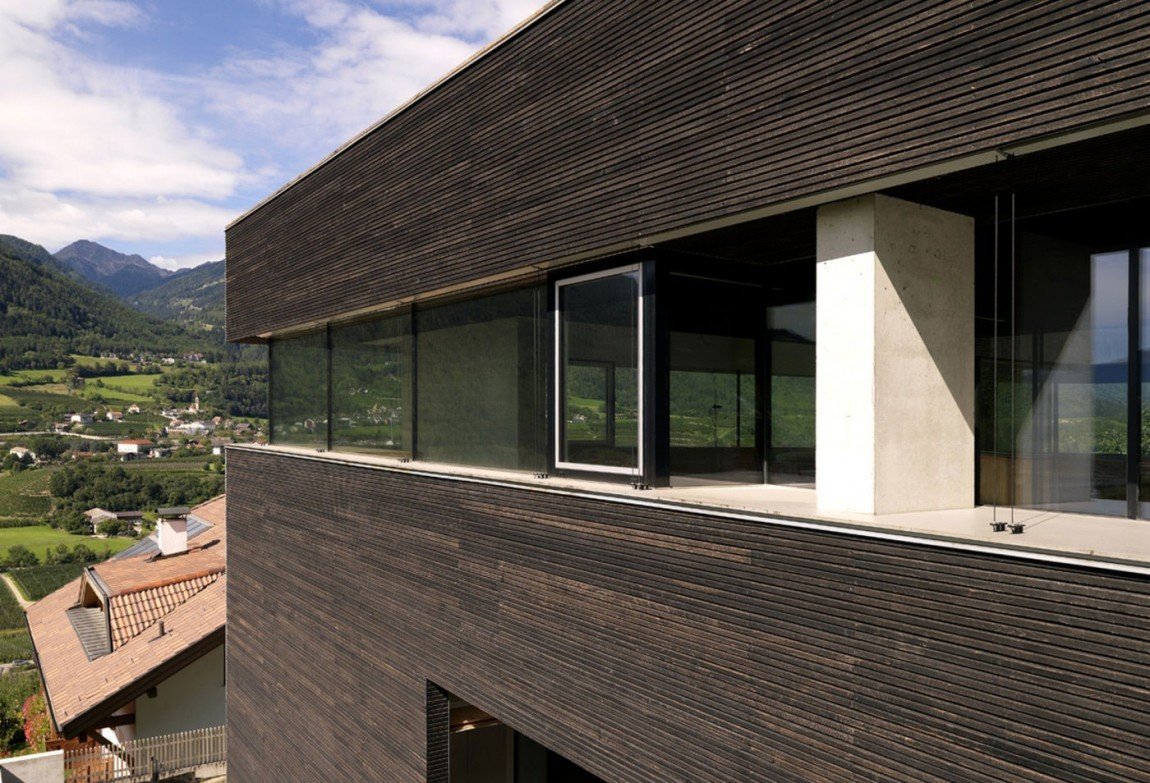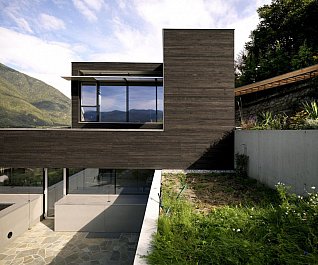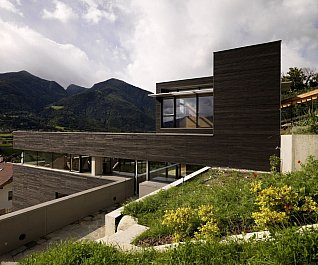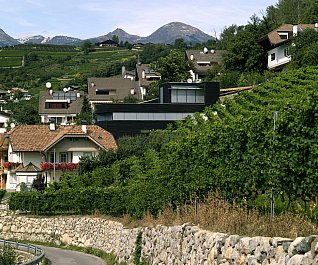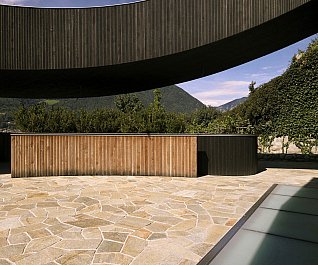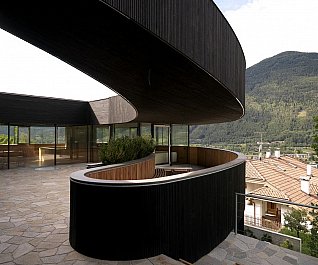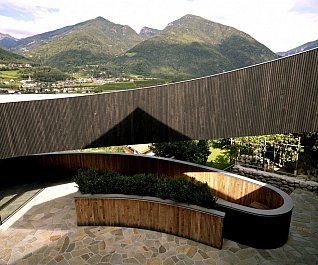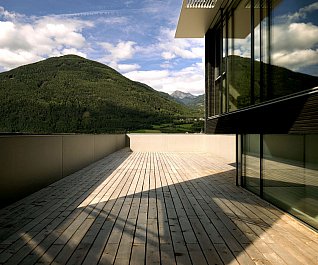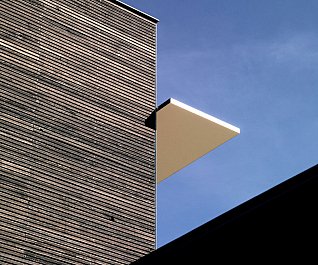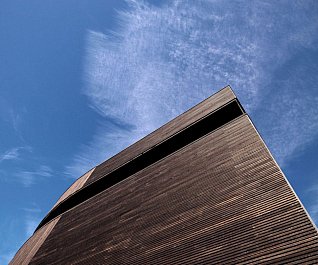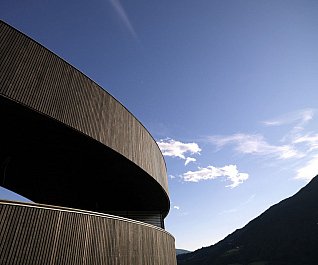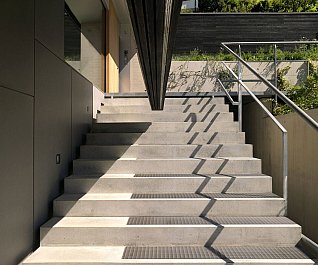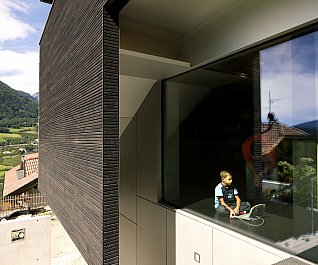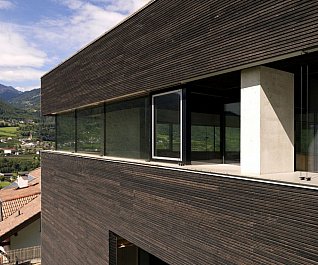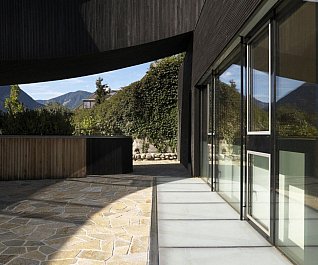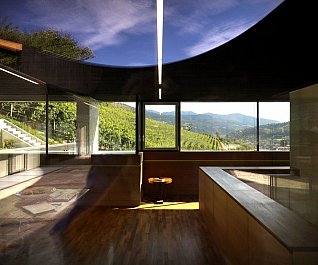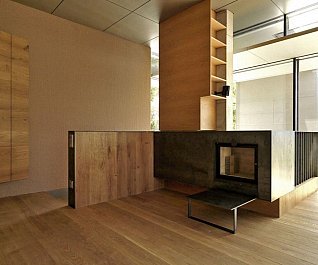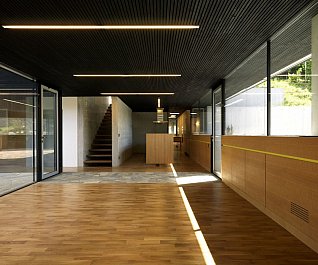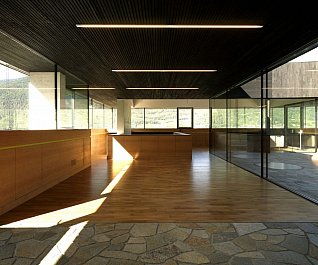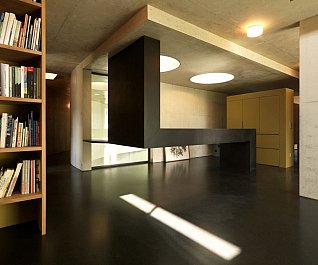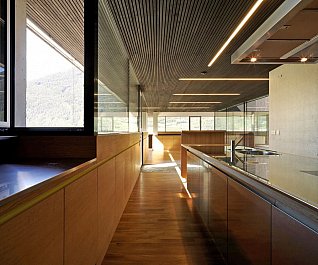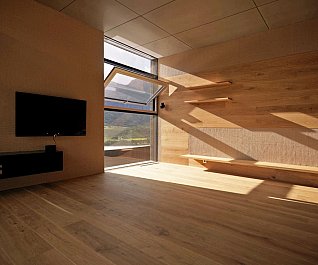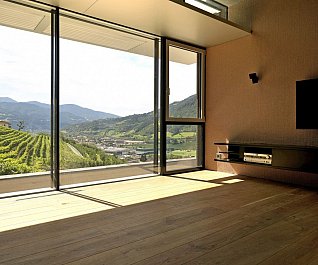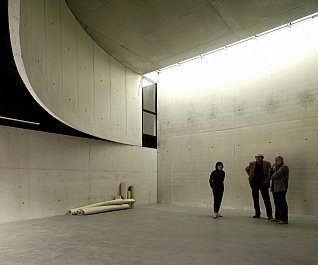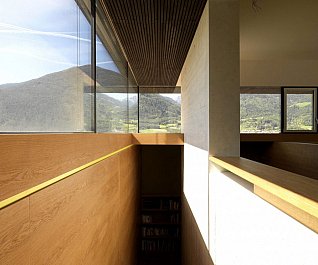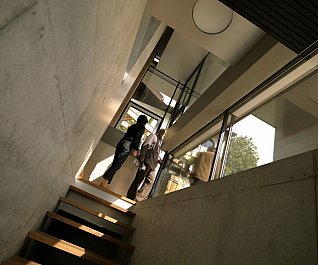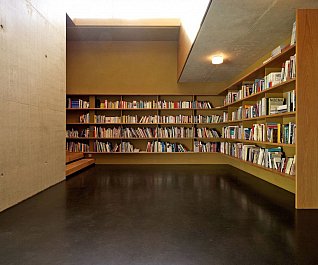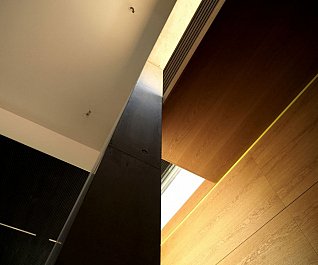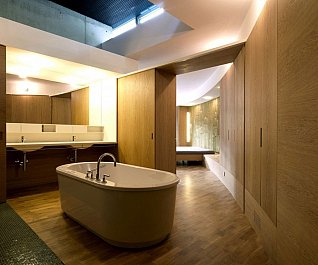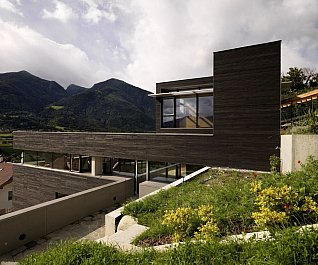The House D is truly one curvaceous looking structure; it’ s like the architectural version of a ribbon. Designed by Pauhof Architekten, this single family home curves into its grandiose mountain landscape in Novacella, Italy. It’s natural stone wall runs along the eastern side and practically merges into the environment. The house is a four story stacked structure created in how it stretches along the entire length of the building line. Its snaking timber construction of the hovering roof follows the curve of the northward facing atrium and is also held up by the bedroom façade continuing off into the vineyard. Each floor contains its own unique character. The lower level has a neutrally toned studio gallery and fair faced concrete walls with natural light beaming through the clerestory windows. A wide half indoor and half outdoor concrete staircase leads to the entrance of the house. A work area and a two-story high studio library looks down into the gallery that’s placed around the gallery’s space which includes a guest bedroom, the children’s rooms and the bath and utility rooms. The main level of the house is an open space connected to two adjacent terraces and contains the living and dining rooms, kitchen and the master bedroom.
“House D is a single-family dwelling with an integrated studio-gallery. Built on a steep slope, it weaves itself into its immediate surroundings and at the same time alludes to the more distant mountain landscape. On the one hand, it is embedded in the suburban settlement, on the other, it stands out as the end point of a southward-facing vineyard. This ambivalence is emphasized by the previously existing natural stone wall that runs along the eastern side, reaching out into the open landscape. The organic curve of this wall – a line characteristic for the entire western slope – the stone border of the private driveway, and the snaking path of the road define the specific situation. In this way, we conceived House D as a kind of joint that extends past the steep slope to connect the existing elements.
The structure of the house – that is, the section and/or the floor plan – results from the unusual nature of the site. On the south side, the house extends along the entire length of the building line, forming a four-story stacked volume (approximate height difference: 12 m). Otherwise, the rounded contour of the plan abstractly follows the property line. The structuring of the interior spaces is an artificial reflection of the specific topographic situation. All views are choreographed to capture as much of the still intact surrounding landscape as possible while blocking out the immediate, less attractive neighborhood. The spiral course of circulation manifests itself in the hovering roof structure (a snaking timber construction) that follows the curve of the northward-facing atrium, winds upward, is briefly supported by the bedroom façade, and then continues off into the vineyard as a tapering pergola.
Four floors, each with its own character, determine the spatial continuum. The lower level houses the semi-public, neutrally toned studio-gallery with fair-faced concrete walls and natural illumination from a side light and clerestory windows on the slope side. The entrance to the house leads via a wide, half-indoor, half-outdoor, concrete staircase to the domain of the lady of the house: a two-story-high studio library and adjacent work area with a glass wall looking down onto the gallery. Grouped around the quarter-circle-shaped void of the gallery are the children’s bedrooms, a guestroom, and the bath- and utility rooms. Colors and materials in general play an especially important role and were planned in an inspiring collaboration with the artist Manfred Alois Mayr from Bolzano.
Along the vertical, load-bearing concrete slab, another staircase leads up to the main level of the house. Here we find the building’s only large-area interconnected level space with two directly adjacent terraces. On this floor the house opens out horizontally, encloses a kind of atrium with connected living and dining room areas, a kitchen, and the master bedroom. The low room height (2.44 m) and the black wooden slat ceiling (like the façade) impel the eye outward. A one-and-a-half meter high ribbon window directly below the ceiling cuts through half of the house, affording a 180° panoramic view of the mountains. The upper level – enclosed in an isolated wooden box – is a private space, a kind of cozy family room.”



